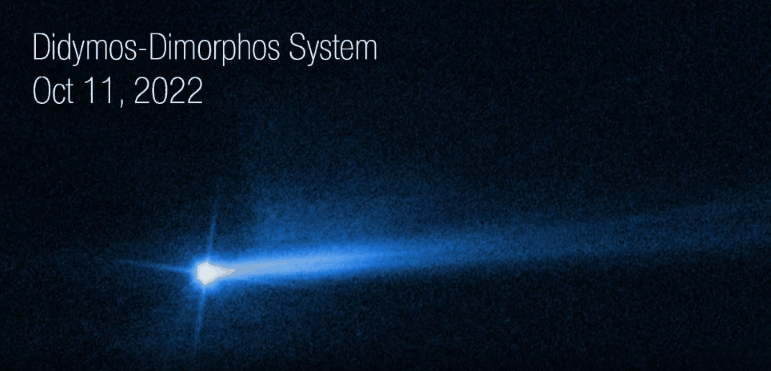A follow-up observation from NASA’s Hubble Space Telescope has shown a curious new development from the asteroid system a spacecraft smashed into last month: a newly developed second tail of ejecta.
On September 26, the first-of-its-kind DART mission saw an uncrewed spacecraft collide with asteroid moonlet Dimorphos, a small body just 160 meters (530 feet) in diameter, that orbits a larger, 780-meter (2,560-foot) asteroid called Didymos. All of this took place some 11 million kilometers ( 7 million miles) away from Earth.
NASA declared the DART mission managed to successfully alter the orbit of Dimorphos. It looks like the crash shortened Dimorphos’ original 11-hour, 55-minute orbit around Didymos by about 32 minutes. This suggests that humanity might stand a chance at averting a future catastrophic collision with an asteroid by using this technique one day.

The newly developed second tail is easier to spot in this gif. Image credit: NASA, ESA, STScI, Jian-Yang Li (PSI)/ Processed by Joseph DePasquale
On top of orbits, astronomers are also keeping a close on how the asteroid’s ejected material, or “ejecta,” is changing over time. In these latest images from Hubble, two tails of dust ejecta can be seen flying out of the Didymos-Dimorphos asteroid system
While researchers were expecting to see the formation of one tail, although perhaps not to the extent they did, the second was not anticipated. Their observations suggest it formed between October 2 and October 8, but they’re still uncertain how it developed. The team says they’re a number of possible scenarios which they’re keen to investigate.
Source Link: Hubble Spots Unexpected Twin Tails In New DART Asteroid Impact Image